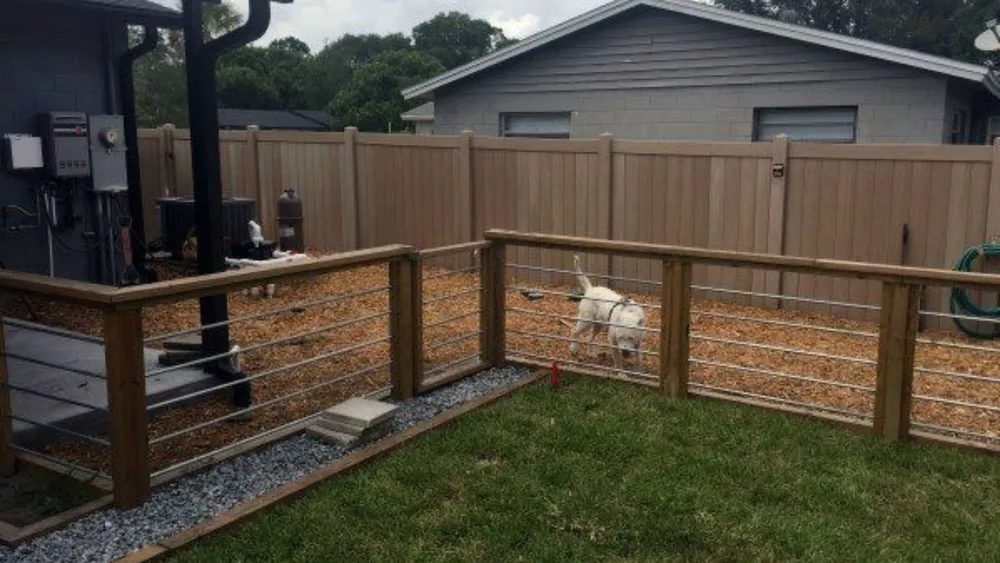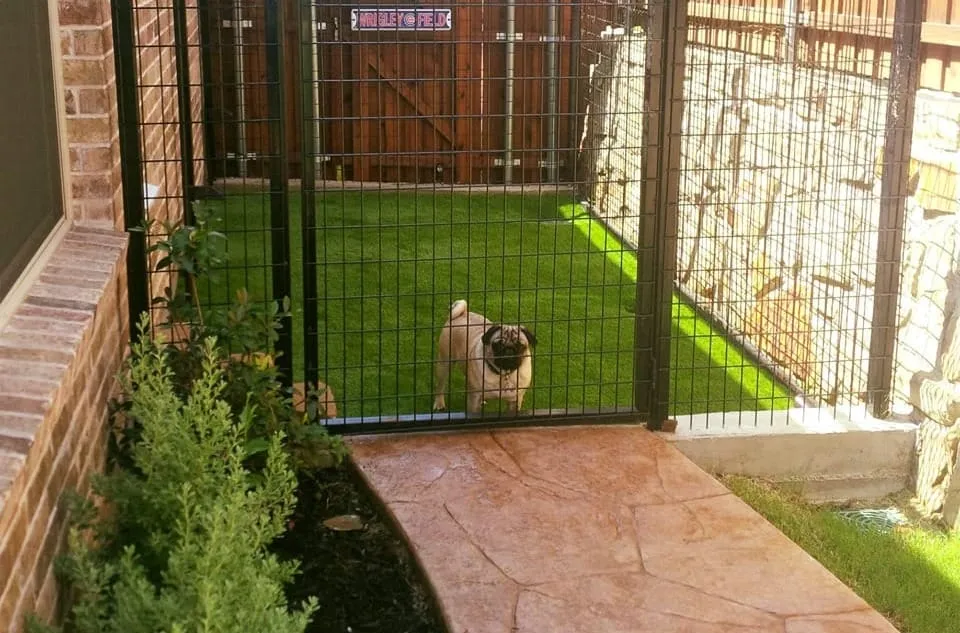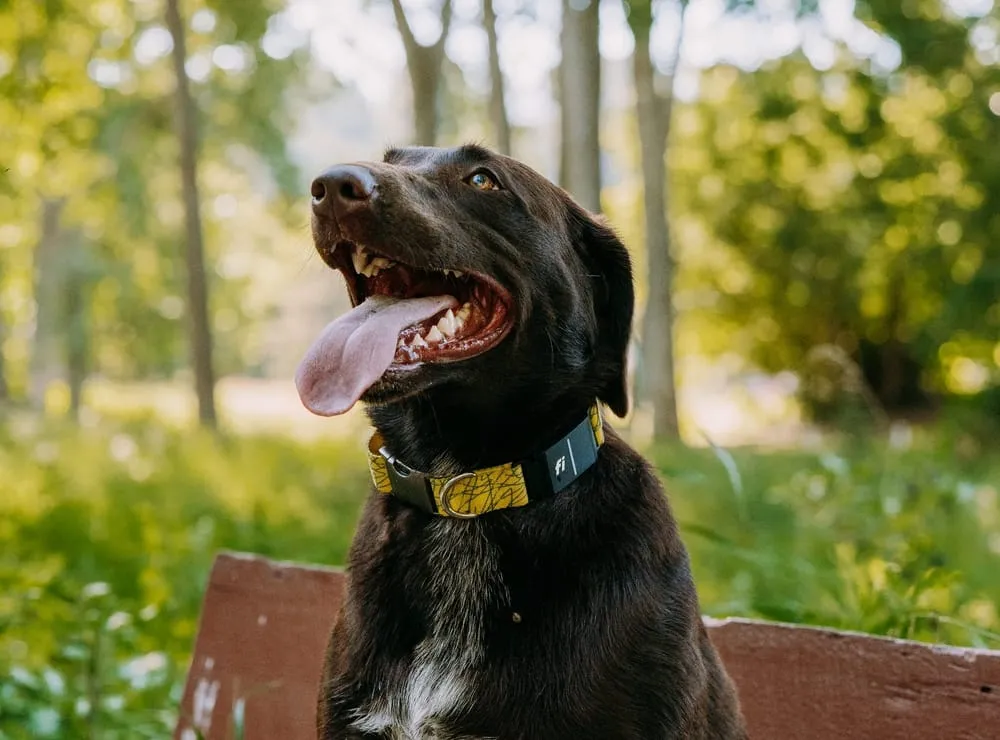For dog owners, creating a suitable living environment for their furry companions is a responsibility that comes with immense rewards. Central to this is determining the right amount of outdoor space, a decision that greatly impacts a dog's quality of life. The question of "How much fenced area does a dog need?" is more than just a matter of yard dimensions; it's about understanding and catering to the nuanced needs of our canine friends.
The need for outdoor space is influenced by a variety of factors, each crucial to a dog's health and happiness. These factors include the breed's inherent traits, such as size and energy levels, which dictate the amount of physical activity and room they require to thrive. Additionally, a dog's age, temperament, and individual personality play significant roles in shaping their space needs. For active, playful breeds, a larger area might be necessary to burn off energy, while smaller or more sedentary dogs might require less.

Moreover, outdoor space is not merely a physical outlet; it's a canvas for mental stimulation, social interaction, and a safe haven for dogs to express their natural behaviors. Understanding the importance of these factors ensures that dog owners can provide an environment that not only keeps their pets physically active but also mentally engaged and happy.
Understanding Your Dog’s Space Needs
Understanding a dog's space needs is a complex task that involves considering various factors such as breed, size, and temperament. Each breed of dog has different characteristics and requirements, and these need to be taken into account when determining the ideal amount of outdoor space.
Breed and Size Considerations:
Generally, larger breeds like German Shepherds or Labrador Retrievers require more space due to their size and energy levels. They need ample room to roam, run, and play to maintain their physical health. On the other hand, smaller breeds such as Chihuahuas or Pomeranians might be content with smaller yards as their exercise needs are not as extensive. However, it's important to note that there are exceptions; some small breeds are incredibly energetic and may require more space than their size would suggest.
Temperament and Activity Level:
The dog's temperament and activity level are also critical factors. A high-energy dog, regardless of size, will need more space to expend its energy compared to a more sedentary dog. Breeds known for their agility and athleticism, like Border Collies, will require more space to engage in active play and exercise.
Importance for Physical and Mental Well-Being:
Adequate outdoor space is essential not only for a dog's physical health but also for its mental and emotional well-being. Dogs are naturally curious and playful animals. Having enough space to explore, sniff, and engage with their environment helps to stimulate their minds, reduce boredom, and prevent behavioral issues. Furthermore, having a designated outdoor area allows dogs to engage in natural behaviors such as digging, barking, and running freely, which are crucial for their overall happiness.
In summary, when determining the amount of fenced area a dog needs, it is vital to consider the dog's breed, size, temperament, and activity level. A well-thought-out outdoor space that caters to these aspects can significantly enhance a dog’s quality of life, ensuring they are physically fit, mentally stimulated, and overall happier.
Breed-Specific Recommendations
When considering the appropriate amount of outdoor space for dogs, it's essential to tailor recommendations to specific breeds, as their size and activity levels vary significantly. Here's a breakdown for small, medium, and large breeds, along with examples that illustrate how breed-specific needs can differ.
Small Breeds:
Small breed dogs like Yorkshire Terriers, Dachshunds, and Shih Tzus generally require less space due to their size. However, their energy levels can vary. For instance, a Jack Russell Terrier, known for its high energy, may need more space to run and play compared to a more sedentary Pug. A small, secure yard with enough room for short bursts of running and playing is usually sufficient. For these breeds, the quality of the space, including enrichment elements like toys and agility equipment, can be more important than the size.
Medium Breeds:
Medium-sized breeds, such as Beagles, Cocker Spaniels, and Bulldogs, often require a moderate amount of space. A Beagle, known for its hunting instincts and energy, would benefit from a larger yard where it can explore and follow scents. In contrast, a Bulldog, which is less active, might be content with a smaller space. A medium-sized, well-fenced yard that allows for some running and exploration is ideal for these breeds.
Large Breeds:
Large breeds like German Shepherds, Golden Retrievers, and Labrador Retrievers typically need more space due to their size and high energy levels. These dogs benefit from a spacious yard where they can run freely and play fetch or other active games. However, it's not just about the size; the space should also be safe and secure, as large breeds can cover a lot of ground quickly and may escape if the fencing is inadequate.
Key Factors in Designing a Dog’s Outdoor Area
Designing an outdoor area for a dog involves several key considerations that ensure the space is both enjoyable and safe. These factors include the dog's size, activity level, safety needs, and environmental conditions.
Size of the Dog and Space Impact:
The size of the dog is a primary factor in determining the amount of space needed. Larger breeds, due to their physical dimensions, require more room to move, run, and play comfortably. Smaller breeds, while needing less space, still require enough room to engage in natural behaviors like running and exploring. The space should allow the dog to move freely without feeling confined.
Activity Levels and Exercise Needs:
A dog's activity level significantly influences the size and features of the outdoor area. Active breeds with high energy levels need more space to accommodate vigorous exercise and play. This might include larger open areas for running and fetching. Less active breeds or older dogs may require smaller spaces with more focus on comfortable resting areas and gentle stimulation.
Safety Considerations:
Safety is paramount when designing a dog's outdoor area. The fence height should be appropriate for the dog's size and jumping capability to prevent escape. The gate should be secure, and the entire area should be checked regularly for potential hazards, such as holes or weak fence spots. Additionally, consider creating a double-gated entry as an added safety measure to prevent dogs from darting out when the gate is opened.

Environmental Aspects:
The outdoor space should be adapted to the local climate and terrain. In hot climates, shaded areas and water access are essential to prevent overheating. In colder regions, sheltered spots and warm bedding are necessary. The terrain should be safe for the dog to run on, with attention to landscaping that avoids toxic plants or sharp objects. Incorporating different textures and features, such as grass, sand, and safe plants, can enhance the dog’s sensory experience.
In summary, when designing an outdoor area for a dog, it's essential to consider the dog's size, activity level, safety requirements, and the environmental context. A well-designed space not only meets the physical and mental needs of the dog but also ensures their safety and comfort in various weather conditions.
The Health and Behavioral Benefits of Adequate Space
Adequate outdoor space is crucial for the overall health and well-being of dogs, impacting both their physical health and behavioral tendencies in significant ways.
Physical Health Benefits:
Ample outdoor space allows dogs to engage in various forms of physical exercise, which is essential for maintaining a healthy weight, strengthening muscles, and improving cardiovascular health. For instance, a large area to run and play helps in preventing obesity, a common issue in pets that can lead to serious health problems like diabetes, heart disease, and joint pain. Additionally, the ability to move freely in a spacious environment encourages more dynamic physical activities, which are vital for joint health, especially in larger breeds prone to conditions like hip dysplasia.
Mental and Behavioral Advantages:
Beyond physical health, sufficient outdoor space offers immense mental and behavioral benefits. Dogs are instinctively explorative and benefit from the sensory stimulation provided by an outdoor environment. A well-designed space can offer a variety of stimuli, including different smells, textures, and sounds, which keep a dog mentally engaged and satisfied.
This sensory engagement is crucial in preventing boredom and related behavioral issues, such as destructive chewing, excessive barking, or digging. Moreover, having a dedicated space to express natural behaviors, like running, sniffing, and playing, contributes to a dog's emotional well-being and can lead to a more relaxed and content demeanor indoors.
In essence, providing dogs with adequate outdoor space is not a luxury but a necessity. It plays a pivotal role in ensuring their physical fitness and mental stimulation, which in turn contributes to their overall happiness and well-adjusted behavior. A dog with access to enough outdoor space is generally healthier, more active, and psychologically balanced.
Solutions for Limited Space Environments
For dog owners living in urban environments or homes with limited outdoor space, finding creative solutions to ensure their pets get adequate exercise and stimulation is essential. There are several strategies and alternatives that can effectively compensate for the lack of a large private yard.
Maximizing Small Outdoor Spaces:
For those with small yards or balconies, optimizing the available space is key. This can be done by using vertical structures like ramps or steps that allow dogs to move upwards, adding a new dimension to their play. Incorporating interactive toys and agility equipment tailored for smaller spaces can also provide physical and mental stimulation. Planting dog-friendly vegetation adds a natural element for dogs to explore, enhancing their sensory experience.
Utilizing Community Resources:
Community dog parks are invaluable for urban dog owners. These parks offer a safe, enclosed space where dogs can run freely, play, and socialize with other dogs. Regular visits to dog parks not only provide physical exercise but also important social interaction, which is crucial for a dog’s behavioral development.
Indoor Activities:
Indoor activities should not be overlooked as a means of exercise and mental stimulation. Puzzle toys, treat-dispensing games, and hide-and-seek are excellent for keeping dogs mentally engaged. Indoor obstacle courses, using household items like cushions and chairs, can provide physical activity and fun training opportunities.
Alternative Exercise Options:
For additional exercise, consider activities like long walks in the neighborhood, hiking trails, or dog-friendly beaches. Some cities also offer indoor doggy play areas or pools specifically designed for dogs, providing alternative options for physical activity.
In conclusion, limited outdoor space doesn't have to hinder a dog's ability to exercise and explore. Through creative use of available space, utilizing community resources, engaging in indoor activities, and exploring alternative exercise options, dog owners can ensure their pets remain active, healthy, and happy.
Fi Dog Collar: Advanced Geofencing for Enhanced Pet Safety and Monitoring
In the realm of pet technology, the Fi Dog Collar has emerged as a standout option for dog owners, particularly those concerned about the safety and activity monitoring of their pets. This innovative collar is not just a traditional pet accessory; it's equipped with advanced features like geofencing, making it an excellent tool for modern pet management.

What is the Fi Dog Collar?
The Fi Dog Collar is a smart collar designed for dogs, integrating cutting-edge GPS tracking technology and activity monitoring. It's a sleek, durable device that attaches to your dog’s collar, offering peace of mind to dog owners through its various functionalities.
Geofencing Feature:
One of the key features of the Fi Dog Collar is its geofencing capability. Geofencing allows owners to set up virtual boundaries or safe zones, such as a home or yard. If the dog crosses these predefined areas, the owner receives an immediate alert on their smartphone. This feature is particularly beneficial for preventing potential escapes or quickly locating a lost dog, ensuring their safety and reducing the anxiety associated with pets wandering off.
Additional Benefits:
Apart from geofencing, the Fi Dog Collar offers other notable benefits:
- Activity Monitoring: It tracks the dog’s daily activity levels, helping owners ensure their pet is getting enough exercise.
- Durable and Waterproof: Designed to withstand the active lifestyle of dogs, it's both durable and waterproof.
- Long Battery Life: The collar boasts a long battery life, reducing the need for frequent charging.
- User-Friendly App: The accompanying app is user-friendly, offering easy access to your dog’s location and activity data.
Fi Dog Collar is more than just a tracking device. Its geofencing feature, combined with activity monitoring and durability, makes it an excellent investment for dog owners who want to stay connected with their pets’ safety and well-being. Whether you’re dealing with an adventurous dog prone to escaping or simply want to keep a closer eye on your pet’s daily activities, the Fi Dog Collar offers a reliable and technologically advanced solution.
Conclusion
In conclusion, this article underscores the critical importance of understanding and accommodating a dog's space needs for their overall well-being. From the specific requirements of different breeds, whether small, medium, or large, to the influence of a dog's activity level and temperament, each aspect plays a vital role in determining the ideal outdoor space. Safety, environmental factors, and creative solutions for limited spaces further contribute to the well-rounded approach needed for canine care. Ultimately, providing adequate and suitable space is not just about physical health; it's integral to a dog's mental and emotional happiness, fostering a fulfilling and joyful life for our loyal companions.
FAQs
- What is the ideal size of a fenced area for a small breed dog?
Answer: Small breed dogs typically need a smaller fenced area, but it should still offer enough space for play and exploration. - Do large breed dogs require a large yard to be happy?
Answer: Yes, large breed dogs generally require more space due to their size and higher energy levels, making a large yard ideal for them. - Can medium-sized dogs adapt to smaller outdoor spaces?
Answer: Medium-sized dogs can adapt to smaller spaces if they are provided with sufficient exercise and mental stimulation through walks and indoor play. - How does a dog's activity level affect its space needs?
Answer: A dog's activity level greatly influences its space requirements; more active dogs need more space to expend their energy. - What are the safety considerations for a dog's fenced area?
Answer: Safety considerations include ensuring the fence is high enough to prevent escape, secure gates, and checking for potential hazards in the area. - Are there solutions for providing outdoor space in urban environments?
Answer: Yes, urban dog owners can utilize dog parks, optimize balconies or small yards, and engage in indoor activities to compensate for limited space. - What are the benefits of adequate outdoor space for dogs?
Answer: Adequate outdoor space provides dogs with necessary physical exercise, mental stimulation, and helps in preventing behavioral issues.